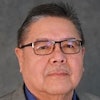The Assassination of Hole in the Day, by Anton Treuer, $25.95, Borealis Books, October 2010, ISBN: 978-0-87351-779-9
In The Assassination of Hole in the Day, Dr. Anton Treuer explores far more than the history behind the murder of Ojibwe chief Bagone-giizhig, whose role in U.S. and Ojibwe history is compelling in its own right. With his bold, deft and rigorous documentation of oral and written sources, Treuer lends new credibility to indigenous oral history as a genuine and credible source of academic information.
On June 27, 1868, Chief Hole in the Day (Bagone-giizhig pronounced Bug-oh-nay-gee-zhig) left his home in Crow Wing, Minn., for Washington, D.C., to fight the planned U.S. removal of his people, the Mississippi Ojibwe, to a reservation in White Earth, Minn. Several miles from his home, he was accosted by at least 12 men from his own tribe and shot dead. The death of this self-styled chief of all the Ojibwe people was front-page national news at the time. In a July 4, 1868 story, The New York Times reported various motives for the murder, including jealousy over Bagone-giizhig’s new White wife by the relatives of his two Ojibwe wives. In keeping with Ojibwe tradition of the time, Hole in the Day practiced polygamy.
The story of Bagone-giizhig parallels the well-known economic and political disempowerment of indigenous peoples in the United States. Treuer, however, provides a rich, textural back story to this human drama not found in traditional history books. In detailing the assassination of Bagone-giizhig and the complex motives for his murder, Treuer presents the reader with a snapshot of the White and Ojibwe milieu of the time. The reader gets an unvarnished look at the motives of Whites and Ojibwe in this historical power struggle. According to Treuer, history often describes American Indians as passive, ineffectual respondents to European efforts to take their land. In his book, however, he shows the reader Indians as agents of resistance and change who are actively involved in the historical events that affect their lives. The Indians in Treuer’s book are complex, conflicted people, every bit as human as Europeans.
Treuer gives considerable attention to describing Ojibwe language, culture, sovereignty and cultural concepts of leadership throughout the book. This information provides important background for understanding the events described in the book. A professor of the Ojibwe language at Bemidji State University, Treuer draws on his considerable expertise in language and culture. He is editor of the Oshkaabewis (pronounced O-shkaab-bay-wis) Native Journal, the only journal of the Ojibwe language.
In describing the name Bagone-giizhig, for instance, Treuer reveals essential elements and influence of Ojibwe language and culture that might not have been possible had he restricted himself to traditional written documentation. The name is powerful and mysterious, with numerous possible interpretations, according to Treuer. From an academic linguistic perspective it could mean an opening in the sky where the sun shines through or perhaps an eclipse. However, Treuer notes, elders might interpret the name to refer to an opening in the sky through which the Great Spirit watches over Indian people. Names encoded secret meaning and, with Treuer providing deeper cultural background to naming practices among Ojibwe, readers get a richer understanding of the events of that era. However, the true meaning of a name might never be divulged lest the person expose himself to spiritual danger, Treuer explains. Therefore, the complete meaning of Bagone-giizhig may never be known. But, Treuer writes, “the beliefs surrounding naming add to our understanding of Bagone-giizhig and his legacy to his people.”
In the preface to The Assassination of Hole in the Day, Treuer confesses to a lifelong fascination with the man. A member of the Ojibwe tribe, Treuer grew up on the Leech Lake reservation in northern Minnesota listening to his father’s stories about the chief. He began his scholarly work on Bagone-giizhig in the mid-1990s as part of his doctoral dissertation at the University of Minnesota’s history department. He recalls experiencing some resistance from non-Indian historians to his use of oral Ojibwe sources. They maintain that oral history is too vulnerable to distortion and therefore less reliable than textual documentation. Treuer, however, points out that Ojibwe have a long history of publicly conveying historical and ceremonial events to large groups of people who actively make vocal corrections to such presentations. A fluent Ojibwe speaker, Treuer spoke to sources in their own language and he cites his Ojibwe sources by describing their relationship to the person or event discussed.
The Assassination of Hole in the Day challenges prevailing academic assumptions about history. This work may set a precedent about who has the final word in telling the history of America.
During a radio interview with “Native America Calling,” a live call-in program linking public radio stations, the Internet, and listeners together in a national conversation about issues specific to Native communities, Treuer said, “If we don’t use oral history and empower our elders and tribal historians to tell our stories, we are left with nothing but the intellectual and academic tools of Europeans to tell our stories.”


















